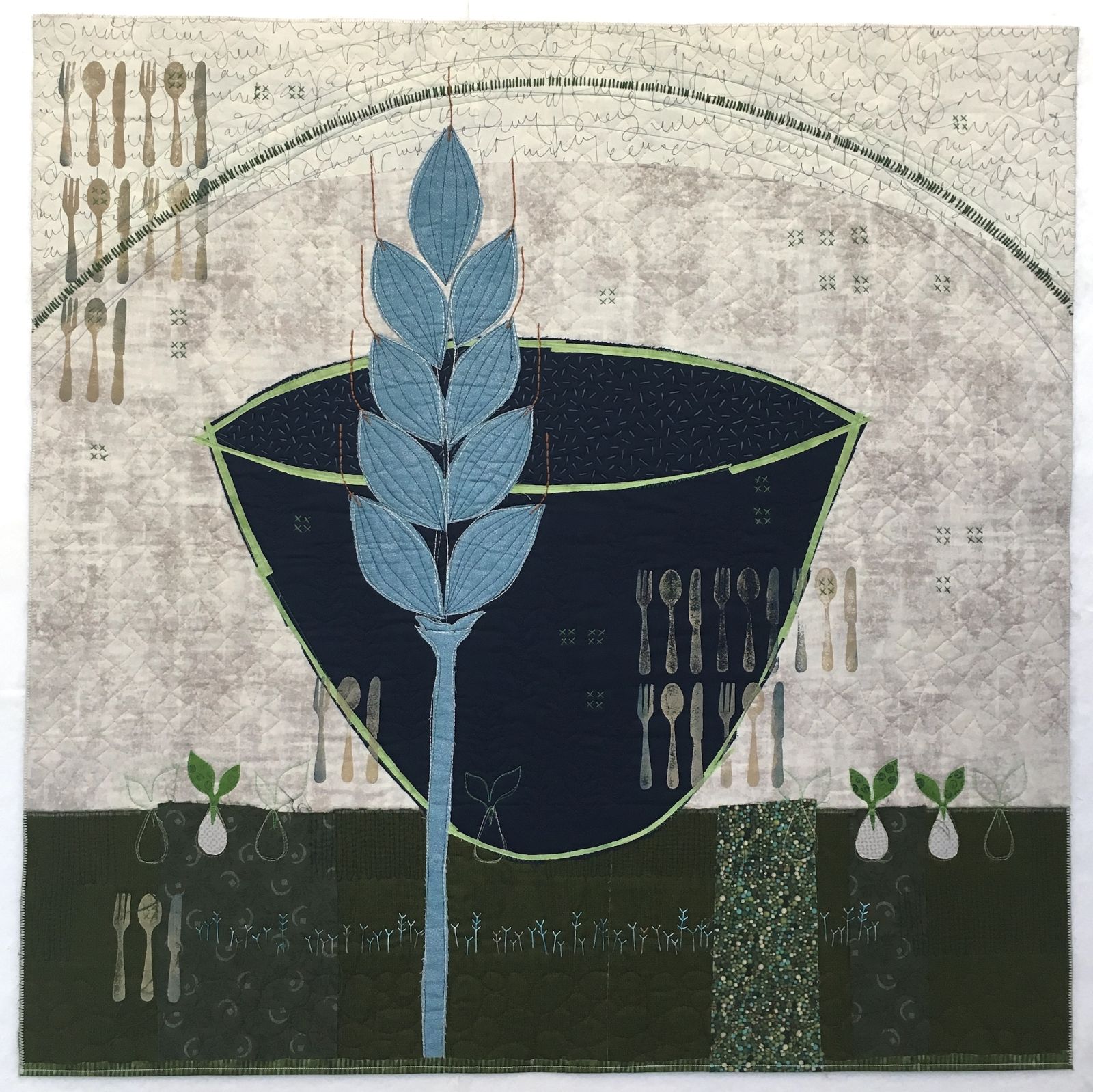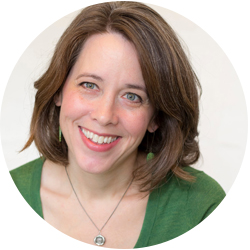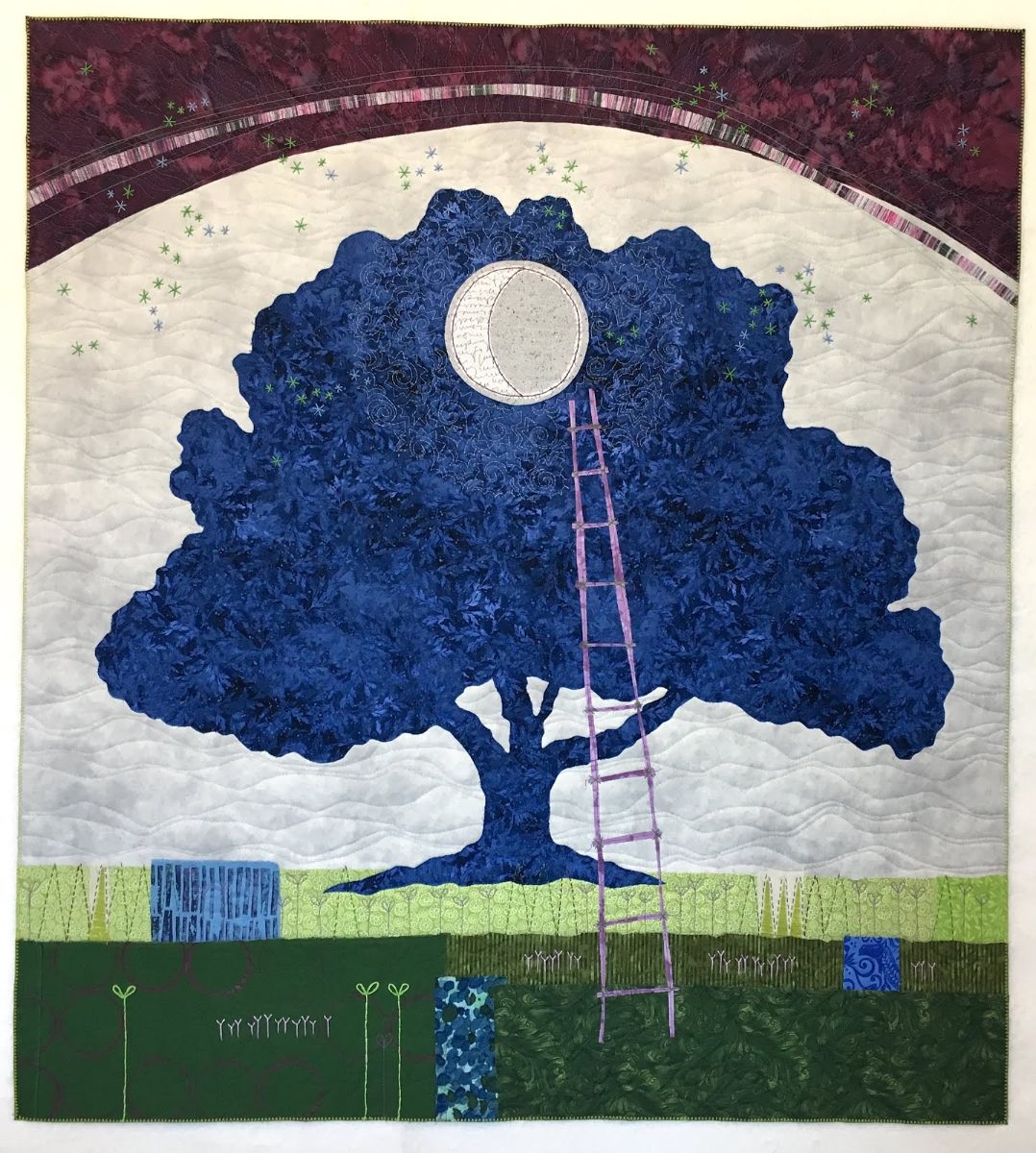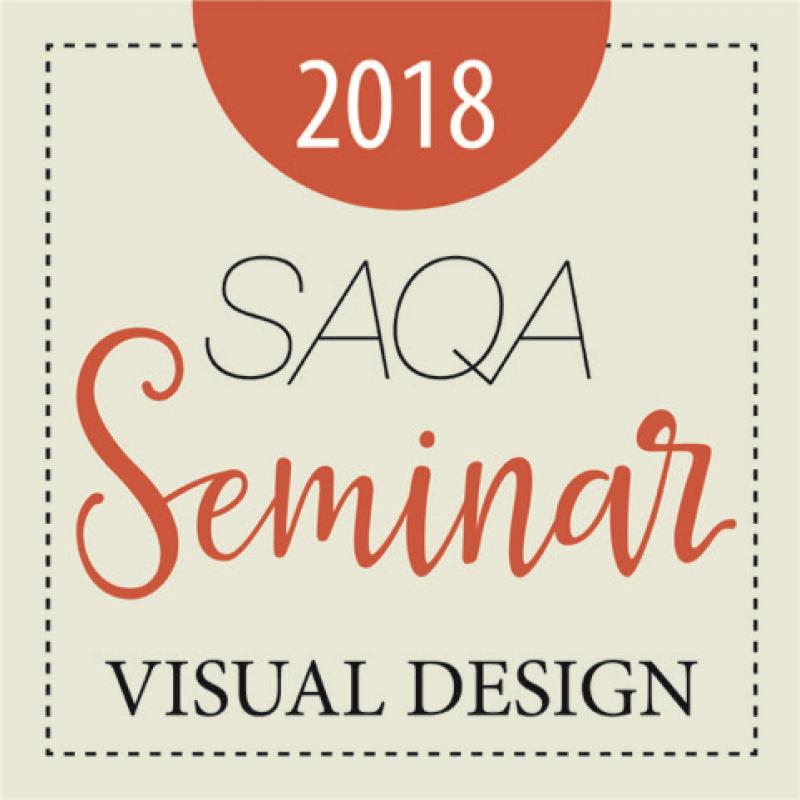Tell us about your artwork and artistic career.
I create art quilt collages by laying fabric, paint and stitching. I used raw edge fused appliqué and embellish my work with original stamped patterns, free motion quilted motifs and hand embroidery. I often incorporate personal symbols in my work which help me tell stories about the ideas and things that are important to me. Sometimes these stories are only evident to myself, but I hope viewers get a sense of the narratives in my work and bring their own ideas to the designs.
How would you describe your process? Do you plan ahead or work more freely?
I start with some nugget of inspiration that could be a photograph, a focus fabric, a symbolic shape or a theme I want to explore. I gather a fabric palette of both commercial prints and fabrics with my own original surface design patterns. I often make a very simple small thumb nail sketch using just a black pen. This sketch might be just a few inches big and only serves to block out the basic composition. All the details of fabric choice, placement and refined shapes are completed at the design wall.
Which stage in the creative process is the most challenging? Which comes most easily?
I wish there was an easy answer here. The reality is that sometimes choosing the fabrics comes easily, but sometimes it’s challenging. Sometimes the composition practically designs itself; sometimes I struggle with it for days. Sometimes I know exactly what kind of stitching the quilt calls for; sometimes I try several options and none seem to work. After making many many art quilts, I’m familiar with these feelings so I try not to be discouraged by the ups and downs. It’s all just part of the process.
What role does editing or revision play in your process?
For my book Art Quilt Collage: A Creative Journey in Fabric, Paint and Stitch, I developed what I call a “design check list.” It’s a list of questions that I ask myself through out the process. There are no right or wrong answers to the questions, but they can direct me to problem areas and help me identify what’s wrong and how it could be fixed.
For instance, I might ask myself if the elements of the quilt are visually connected by shape or color. I may answer yes and note that this helps move the eye around the quilts. I may answer no, but this gives emphasis to a particular area. If I see a problem, I can consider whether it could be fixed by bringing in more of a color with fabric or paint. Or if swapping one element with something different might be an improvement. These questions are helpful at every stage in the process, even when the quilt is finished and they can provide a good framework for evaluating the success of the overall visual impact of the quilt.

Provisions by Deborah Boschert
Is there a particular question you ask yourself or an idea that you keep in mind when you are focusing on the visual design of an art quilt?
I’m usually thinking about balance. If there is visual weight in one area, is it balanced in another area? Or if it’s not, is that intentional and am I pleased with the tension that imbalance might create. I’m also trying to balance things like mixing commercial prints with original surface design. I strive for a balance of machine stitching and hand embroidery. I’m even thinking about a balance of familiar imagery with less-obvious motifs. In all honesty, I’m also thinking about balancing my time in the studio with the other things in my life.
ABOUT THE ARTIST
 Deborah Boschert's award-winning art quilts are shown in museums, quilt shows, and publications. She regularly shares her process in programs and workshops for quilt guilds and visual arts groups.
Deborah Boschert's award-winning art quilts are shown in museums, quilt shows, and publications. She regularly shares her process in programs and workshops for quilt guilds and visual arts groups.
Deborah is the author of Art Quilt Collage: A Creative Journey in Fabric, Paint and Stitch. Deborah and her family live outside of Dallas, Texas.




